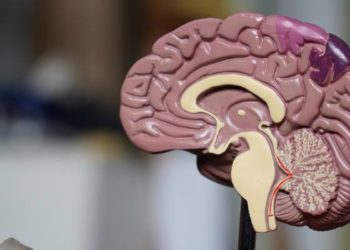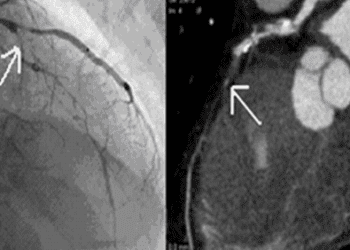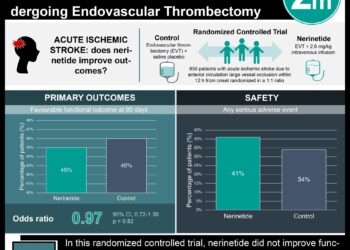2 Minute Medicine Rewind December 18, 2018
Non-alcoholic steatohepatitis (NASH), the most common chronic liver disease in the United States, puts patients at increased risk of developing cirrhosis and hepatocellular carcinoma. Patients with NASH are also at an increased risk of experiencing cardiovascular events and overall mortality. Pegbelfermin (BMS-986036) is a PEGylated human fibroblast growth factor 21 (FGF21) that has been previously shown to improve metabolic markers, such as insulin sensitivity and serum adiponectin concentration in obese individuals with type 2 diabetes. This multicenter, randomized, double-blind phase 2a trial aimed to investigate the safety and efficacy of pegbelfermin. Patients between the ages of 21 and 75 with biopsy-proven NASH and a hepatic fat fraction of at least 10% (n=75) were randomized to receive 16 weeks of 10 mg of pegbelfermin once a day, 20 mg of pegbelfermin once a week, or placebo once a day. Researchers found that the absolute hepatic fat fraction was significantly decreased in the two groups receiving pegbelfermin as compared to placebo, with a mean change of -6.8% in the group receiving pegbelfermin daily versus the -1.3% mean change seen in the placebo group (p=0.0004). In the group receiving weekly pegbelfermin, a significant difference was also noted with a mean change of -5.2% in the intervention group compared to -1.3% in the placebo group (p=0.008). No deaths, treatment-related serious adverse events, or discontinuations due to adverse events were observed. Investigators therefore concluded that treatment with 16 weeks of subcutaneous pegbelfermin was well tolerated and resulted in a significant reduction in hepatic fat fraction in patients with NASH.
It has been previously demonstrated that asymptomatic bacteriuria (ASB) is associated with an increased incidence of surgical site infection (SSI) and urinary tract infection (UTI) after non-urologic procedures. However, it is unclear whether screening for and treating ASB improves postoperative outcomes. In his retrospective cohort study, 68,265 patients that had undergone cardiac, orthopedic, or vascular surgical procedures were followed up to characterize the association between detection and treatment of preoperative ASB and postoperative outcomes. Complete medical records were reviewed to determine the results of the preoperative urine culture, whether the patient received antimicrobial prophylaxis against the microbe that was discovered, and to determine if SSI or UTI complicated the post-operative course. Of the patients included in the study, 17,749 (26.0%) had a urine culture. Of the 17,748 urine cultures performed, 755 (4.3%) had a positive result, of which 617 (81.7%) were designated as preoperative ASB. Researchers found that patients with ASB did not have a significantly increased risk of SSI (OR 1.58, 95% CI 0.93 to 2.70, p=0.08). It was also found that antimicrobial therapy with activity against the microbes implicated in ASB did not result in a significantly reduced risk of SSI (OR 1.01, 95% CI 0.28 to 3.65, p=0.99). Additionally, treatment or prophylaxis for ASB did not reduce the incidence of postoperative UTI (OR 0.68, 95% CI 0.20 to 0.30, p=0.54). Investigators therefore concluded that the practice of screening and treating preoperative ASB is unnecessary, as antimicrobial therapy against microbes found in preoperative urine cultures was not associated with a reduction in postoperative UTI or SSI.
Autologous stem cell transplantation (ASCT) is commonly used in the treatment of multiple myeloma, though relapse is extremely common. Ixazomib is a proteasome inhibitor that has been suggested as a possible maintenance therapy for patients with multiple myeloma after they complete ASCT. In this multicenter, double-blind, randomized phase 3 study, 656 patients with newly diagnosed symptomatic multiple myeloma who had experienced a partial or complete response after receiving the current standard of care, including ASCT and high dose melphalan, were randomized to receive weekly oral ixazomib in 28-day cycles for 2 years, with a dose increase from 3 milligrams to 4 milligrams in cycle 5 if well tolerated, or placebo, to assess the safety and efficacy of ixazomib as maintenance therapy following ASCT. Researchers found that progression-free survival was significantly longer in the group treated with ixazomib, as compared to placebo (26.5 months vs. 21.3 months, HR 0.72, 95% CI 0.58 to 0.89, p=0.0023). Similar rates of second malignancies were observed between the two groups. Serious adverse event rates were also similar between the two groups. Investigators therefore concluded that maintenance ixazomib therapy results in prolonged progression-free survival after ASCT in patients with newly diagnosed multiple myeloma.
Sex and Race Differences in the Association of Incident Ischemic Stroke with Risk Factors
There are large differences in the incidence of stroke among various ethnic groups, as well as between sexes. These differences also vary significantly with age. In this prospective cohort study, 25,789 patients age 45 years and older who were stroke-free from the Reasons for Geographic and Racial Differences in Stroke (REGARDS) cohort (2003-2007) were followed up to October 2016 to investigate incidence and risk factors for ischemic stroke while stratifying by sex for both black and white individuals. Researchers found ischemic stroke incidence rates of 16.9% for black men, 34.7% for white men, 23.1% in black women, and 25.2% in white women. Between the ages of 45 and 64 years, both white women and black women had significantly lower risks of stroke, as compared to white men (incidence rate ratio (IRR) 0.68, 95% CI 0.49 to 0.94) and black men (IRR 0.72, 95% CI 0.52 to 0.99), respectively. Between the ages of 65 and 74 years, white women were still at a lower risk for stroke as compared to white men (IRR 0.71, 95% CI 0.55 to 0.94). However, black women in the same age group had no significant difference in risk as compared to black men (IRR 0.94, 95% CI 0.68 to 1.30). Neither race exhibited significant differences between sexes at ages above 75. No risk factors differed between sexes for black individuals. However, for white individuals, risk factors of systolic blood pressure (women: HR 1.13, 95% CI 1.05 to 1.22; men: HR 1.04, 95% CI 0.97 to 1.11, p=0.099), diabetes (women: HR 1.84, 95% CI 1.35 to 2.52; men: HR 1.13, 95% CI 0.86 to 1.49, p=0.02), and heart disease (women: HR 1.76, 95% CI 1.30 to 2.39; men: HR 1.26, 95% CI 0.99 to 1.60, p=0.09) had a higher association with stroke risk in women, as compared to men. Investigators therefore concluded that women are at lower risk for stroke than men, independent of race, between the ages of 45 and 64 years. However, no difference between the sexes was observed for individuals age 75 years and older. Between ages 65 and 74 years, only white women had significantly lower risk than their same-race male counterparts. Differences between the sexes in terms of risk factors also varied between black and white individuals.
Ischemic heart disease, the most common cause of morbidity and mortality worldwide, has many modifiable and non-modifiable risk factors, including several external factors. This retrospective observational study aimed to investigate circadian rhythms, major sports events, and national holidays as potential triggers of myocardial infarction. Investigators reviewed 283,014 cases of myocardial infarction between 1998 and 2013. Cases with symptom onset during Easter, Midsummer Holiday, Christmas, and New Year were recorded and compared to incidence rates in the two weeks before and after the holiday. Cases with symptom onset during FIFA World Cup, UEFA European Championship, and both the winter and summer Olympic Games were also recorded, with the control time period being dates exactly one year before and one year after. Hours at which symptom onset occurred were also recorded. Researchers found that Christmas (incidence rate ratio (IRR) 1.15, 95% CI 1.12 to 1.19, p<0.001), Christmas Eve (IRR 1.37, 95% CI 1.29 to 1.46, p<0.001), and Midsummer holidays (IRR 1.12, 95% CI 1.07 to 1.18, p<0.001) were all associated with an increased risk of myocardial infarction. However, Easter and the sporting events studied did not yield a significant difference in terms of risk for myocardial infarction. A higher risk of myocardial infarction during Mondays and during the early morning was also observed. Investigators concluded that Christmas, Midsummer holidays, as well as Mondays and early mornings, were all associated with a higher risk of myocardial infarction, implying that external factors may contribute to these occurences.
Image: PD
©2018 2 Minute Medicine, Inc. All rights reserved. No works may be reproduced without expressed written consent from 2 Minute Medicine, Inc. Inquire about licensing here. No article should be construed as medical advice and is not intended as such by the authors or by 2 Minute Medicine, Inc.







